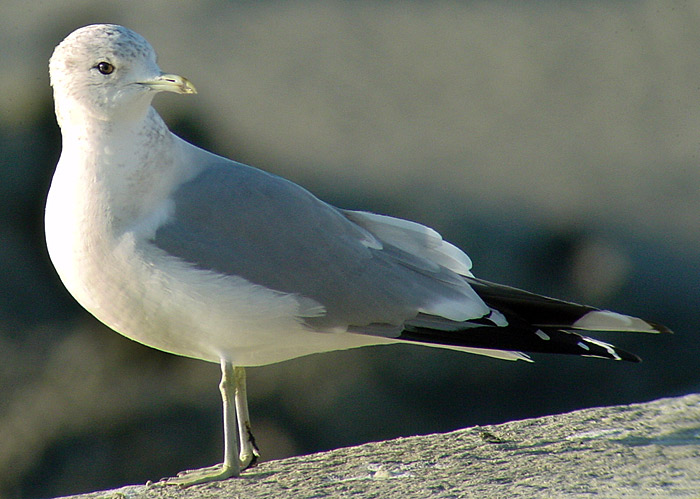 Mew Gull Larus canus canus; heinei; kamtschatschensis; brachyrhynchus
Mew Gull Larus canus canus; heinei; kamtschatschensis; brachyrhynchus
(last update: March 12, 2012)
Mew Gull canus adult, January 04 2002, Etaples / Boulogne-sur-Mer, France (50.42N,1.34E).

From late summer to October, a complete moult will bring Mew Gull in so-called "adult winter" plumage. The head is white with spots, most densely in the hind-neck. The under-parts, tail-coverts and rump are white. The upper-parts are medium grey, with broad white fringes on the tertials. The adult primaries have a clear-cut black triangle on the outer-wing. Black sub-terminal markings run down to P6 or P5. From P1-P9 the primaries show extensive white tips and the two mirrors on P9 and P10 are obvious (there may even be a small mirror on P8). The iris is brown, the bill is yellowish with a faint black bill-band and the legs are yellowish, greenish or greyish, often with a flesh-coloured hue.
In adult winter, brachyrhynchus develops only diffuse head streaking, creating a diffuse grey head and no dark bill-band, where as canus often has the head strongly mottled or streaked and often develops a full bill-band in winter. Furthermore, the iris in brachyrhynchus is paler, sometimes clear yellow.